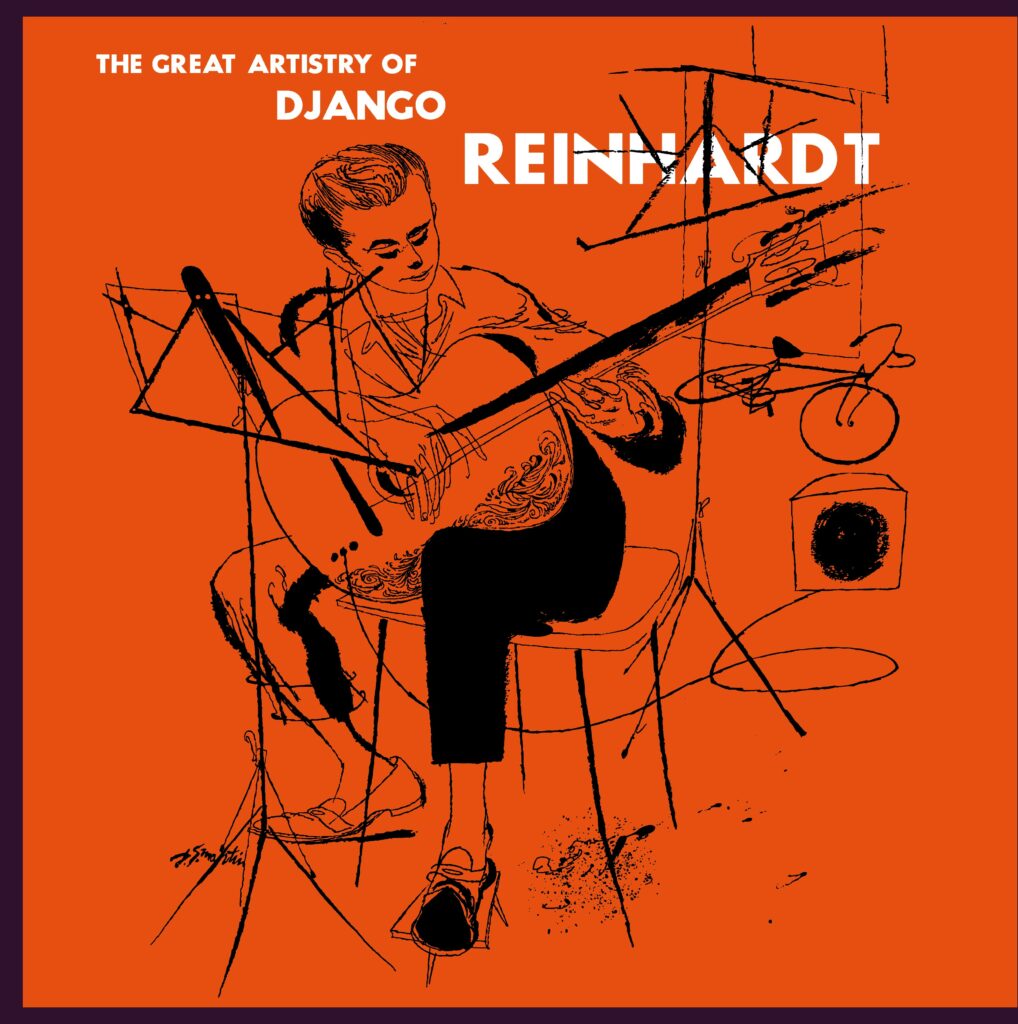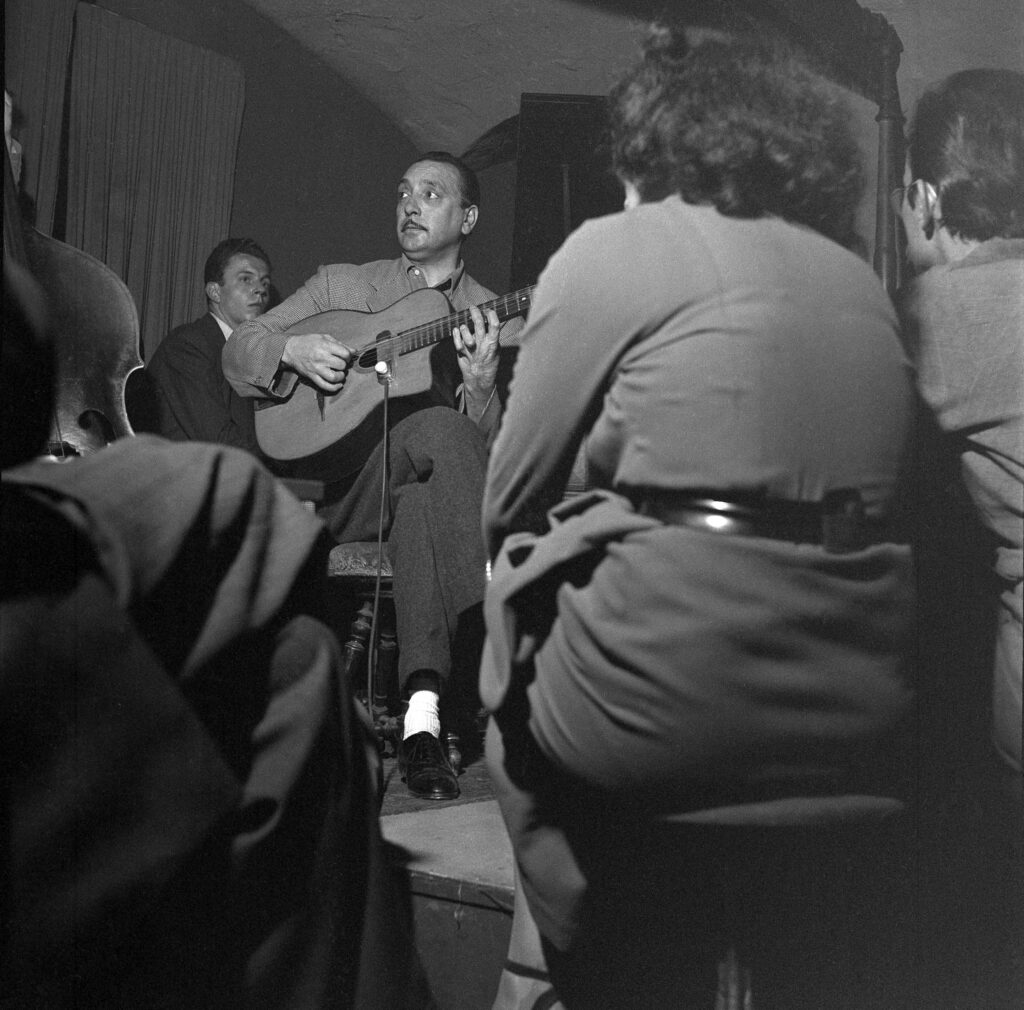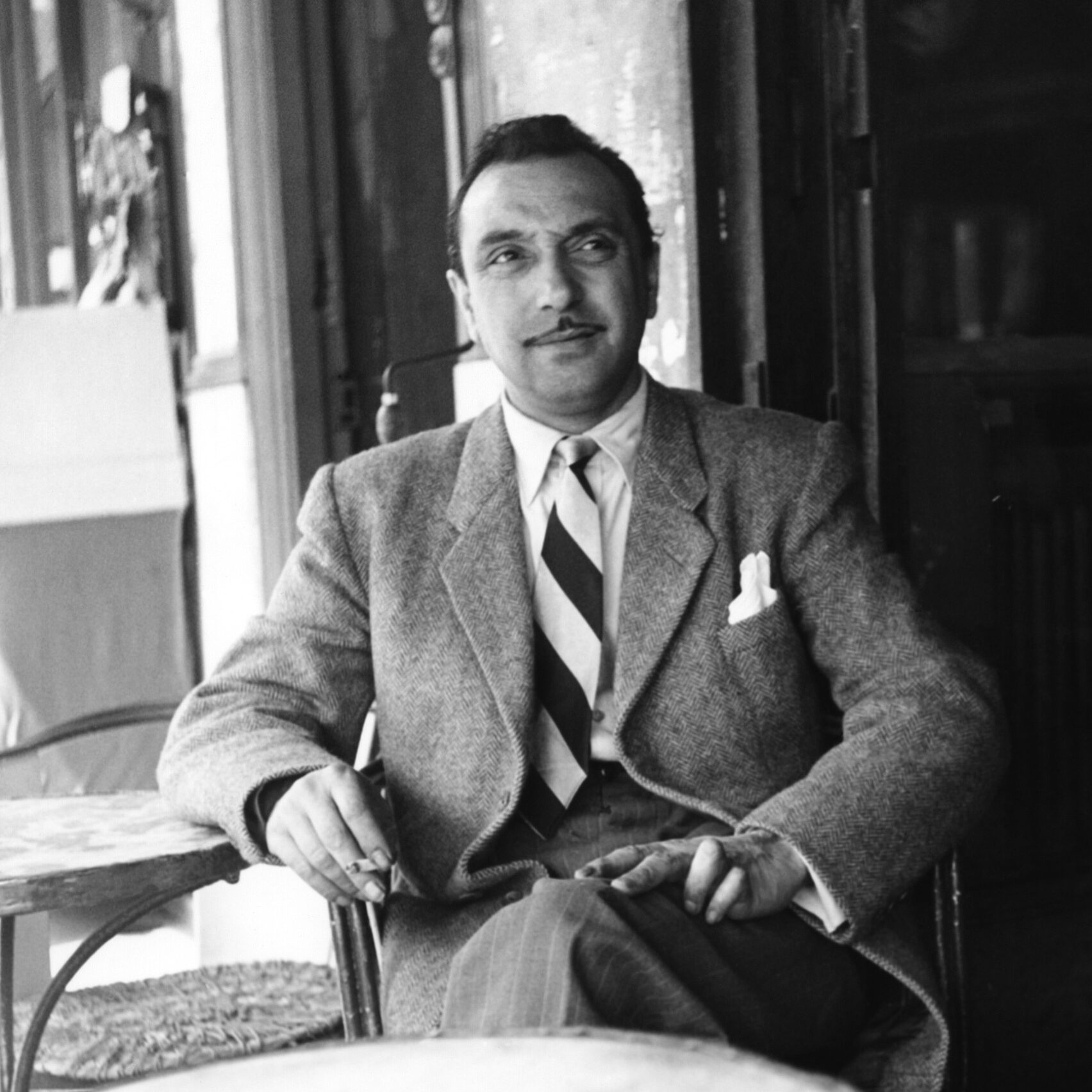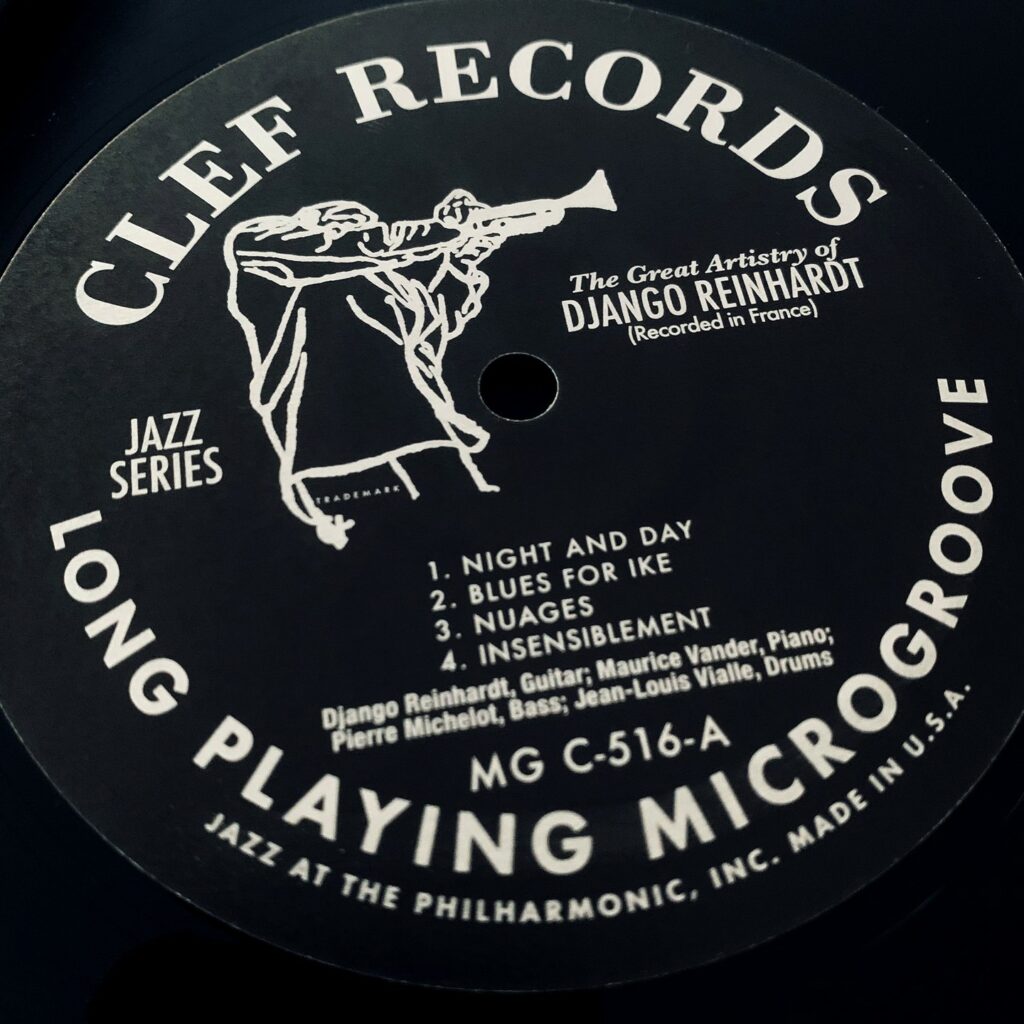The Great Artistry of Django Reinhardt


On March 10th 1953, three “avant-gardists” carefully chosen by Django—they were the only musicians he still enjoyed playing with—went into the studio with him: pianist Maurice Vander, bassist Pierre Michelot, and drummer Jean-Louis Viale. The repertoire was agreed on between the guitarist and the producer: four American standards, “September Song,” “Night and Day,” “Brazil” and “Confessin’,” one French song by Paul Misraki, “Insensiblement,” two of Django’s most well-known compositions, “Nuages” and “Manoir de mes rêves,” and one new tune, “Blues for Ike.” The eight titles were put in the can in three hours.
According to Pierre Michelot, “To me, it’s the most beautiful version of ‘Nuages’ he ever recorded. At one point, he phrases it in such a way that I get the shivers listening to the record. And each time I hear it, I’m moved. I can’t explain why. Perhaps he felt he was going to leave us, I don’t know. What he plays on ‘Brazil’ is simply fabulous… that’s when you realize the impression Parker and Dizzy left on him. You can hear the classic, orthodox Django again on ‘Manoir de mes rêves,’ but he plays ‘Night and Day’ and ‘September Song’ like never before. The construction of each piece is identical: statement of the theme, improvisation, back to the theme. Django’s the only soloist, unlike what happened at the Club Saint Germain. Only ‘Blues for Ike’ is stated by the guitar and bass. One, two, three takes maximum; Django wasn’t one to do the same thing twenty times over… For him, the first draft was the best: it’s when your mind’s clear and your ideas are fresh […] He liked this session, I think, but when it was released almost everyone was indifferent. Yet he was at a turning-point in his musical expression, and open to everything new. Changing his famous sound that way… he was using an electric guitar that was nothing like the makeshift instrument he had at the end of the Forties and his mastery of it was perfect. Django really intended it as an answer to all those who said he was past it. He was bringing the clock forward, but nobody was interested in what time it was then.”
Django wouldn’t get another opportunity, nor would Norman Granz see another dream come true (he wanted to do a trio record with Django, Oscar Peterson and Ray Brown); Jean “Django” Reinhardt passed away on May 16th 1953. He was forty-three years old.
Alain Tercinet (English translation by Martin Davies)
– 180g / 12’’ LP / 45-RPM
– Limited edition of 500 hand-numbered copies
– Exclusively available on www.samrecords.fr


Pour l’accompagner au studio le 10 mars 1953, Django a choisi trois musiciens français considérés alors comme “avant-gardistes” – les seuls avec lesquels il avait maintenant plaisir à jouer –, le pianiste Maurice Vander, Pierre Michelot à la contrebasse et le batteur Jean-Louis Viale. Le répertoire a été choisi d’un commun accord entre le guitariste et le producteur : quatre « standards » américains – September Song, Night and Day, Brazil, Confessin’ –, une chanson française signée Paul Misraki, Insensiblement, et deux compositions de Django parmi les plus connues, Nuages et Manoir de mes rêves ; un seul original, Blues for Ike. Huit interprétations qui furent enregistrées en trois heures.
Pierre Michelot raconte : “Pour moi, c’est la plus belle version de Nuages qu’il ait jamais gravée. À un moment, il phrase de telle façon qu’en écoutant le disque, j’ai eu comme un frisson et à chaque fois que je l’entends, je suis ému. Je ne saurais expliquer pourquoi. Pressentait-il qu’il allait bientôt nous quitter, je ne sais pas. Ce qu’il joue sur Brazil est tout simplement fabuleux. Là, on se rend compte que Parker et Dizzy l’ont impressionné. On retrouve mieux le Django classique, orthodoxe sur Manoir de mes rêves, mais il interprète Night and Day et September Song comme il ne l’avait jamais fait auparavant. La construction de chaque pièce est identique : exposé du thème, improvisation, ré-exposition du thème. Django est le seul soliste contrairement à ce qui se passait au Club Saint-Germain. Seul Blues for Ike est exposé par la guitare et la basse. Une, deux, trois prises au maximum, il n’était pas homme à recommencer vingt fois la même chose. Pour lui le premier jet était le meilleur : on a alors l’esprit clair et les idées fraîches […] À l’époque, cette séance qu’il aimait bien, je crois, est sortie dans l’indifférence quasi-générale alors qu’il se trouvait à un tournant de son expression musicale, ouvert à toutes les nouveautés. Modifiant ainsi sa fameuse sonorité, avec une maîtrise parfaite il utilisait une guitare électrique qui n’était plus l’engin bricolé de la fin des années 1940. Django entendait bien répondre à tous ceux qui le considéraient comme dépassé. Il remettait les pendules à l’heure mais personne ne se souciait alors de la lire.”
Une opportunité qui ne se représentera plus. Quant au rêve de Norman Granz – l’enregistrer en trio avec Oscar Peterson et Ray Brown – il ne pourra jamais se concrétiser. Jean “Django” Reinhardt s’éteignait le 16 mai 1953. Il avait quarante-trois ans.
Alain Tercinet
– LP 180g / 30cm / 45-tours
– Edition limitée à 500 exemplaires, numérotés manuellement
– Uniquement disponible sur www.samrecords.fr
Django Reinhardt et ses Rythmes
Django Reinhardt: guitar
Maurice Vander: piano
Pierre Michelot: bass
Jean-Louis Viale: drums
Paris, March 10, 1953.
17278 A1 Night and Day (Cole Porter) 2:50
17276 A2 Blues for Ike (Django Reinhardt) 3:20
17281 A3 Nuages (Django Reinhardt) 3:14
17279 A4 Insensiblement (Paul Misraki) 3:06
17282 B1 Brazil (Ary Barroso) 2:25
17277 B2 September Song (Kurt Weill) 2:31
17283 B3 Confessin’ (Doc Daugherty / Ellis Reynolds) 3:36
17280 B4 Manoir de mes rêves (Django Reinhardt) 2:35
Original LP issues: Blue Star 6830 / Clef Records MGC-516.
(P) 1953 Decca Records France.
—
Original recordings produced by Norman Granz.
Audio restoration and mastering by François Lê Xuân.
Lacquers cut by Kevin Gray, Cohearent Audio.
Cover illustration by David Stone Martin manually screen printed by Stéphane Constant for Dezzig.
Reissue produced by François Lê Xuân and Fred Thomas for Sam Records / Saga with the kind permission of Decca Records France.
Special thanks: Pascal Bod, Christelle D’Almeida, Michel Mercier and Nicole Tercinet.
